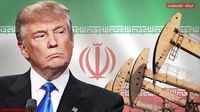Iran's agricultural exports have seen a remarkable surge, increasing by 35% from the beginning of Farvardin to the end of Bahman in the Iranian year 1403, which corresponds to the period from March 21, 2024, to February 19, 2025. This growth comes despite facing several challenges in the export process. According to the Ministry of Agriculture Jihad, the total agricultural exports during this period reached 9.4 million tons, valued at approximately $7.57 billion.
Spirit of optimism surrounds this achievement, with 90% of the weight and 77% of the value of these exports directed towards 15 neighboring countries. This trend highlights the strong demand for Iranian agricultural products in the region, which has been a significant factor in the overall increase.
However, the path to successful exports isn't without hurdles. Haadi Karimi, a member of the Iran-Kazakhstan Chamber of Commerce, emphasized the importance of traceability in agricultural products. "Products must be identifiable by their origin, harvest time, and the fertilizers used," he stated. Such information is crucial for facilitating smoother entry into foreign markets.
Moreover, Mohammad Ali Rezaei, the President of the Agricultural Commission of the Chamber of Commerce, pointed out that exporters must maintain their commitments to customers. "Unfortunately, some sudden regulations have led to a loss of trust among buyers regarding Iranian markets," he noted, calling for a more stable regulatory environment to bolster confidence.
The Iranian government is aware of these challenges and is taking steps to ease the export process. Minister of Agriculture Jihad, Gholamreza Nourizadeh Ghazlajeh, acknowledged that while some essential goods face restrictions, efforts are underway to streamline exports. "We are implementing a plan that allows traders to sign contracts with farmers, specifying the standards needed for production," he explained.
Looking ahead, the agricultural export sector is poised for further growth. According to the goals set out in the Seventh Development Plan, Iran aims to increase agricultural exports by 20% to 25% by the end of the program.
In a broader context, the Iranian economy has been navigating a tumultuous landscape characterized by fluctuating exchange rates and gold prices. Despite these challenges, signs of resilience are emerging. Reports indicate that Iran earned approximately $34 billion from oil exports in the first nine months of 2023, a figure that underscores the stability of oil revenues amidst external pressures.
Furthermore, in 2024, non-oil exports from Iran increased by 23% compared to the previous year, surpassing $25.5 billion. This growth signifies the nation's ongoing efforts to diversify its revenue sources and reduce reliance on oil exports.
According to Bloomberg, recent improvements in logistics and the lifting of certain legal restrictions have facilitated a notable increase in Iranian oil exports to China. In February 2025, oil exports surged by 86% compared to January, reaching 1.74 million barrels per day. This increase reflects the successful navigation of previous sanctions and logistical hurdles that had previously hindered exports.
TankerTrackers, which monitors crude oil transport, reported that Iran's oil exports in January and February increased by approximately 50%. This rebound indicates a strategic recovery in Iran's oil sales, bringing them back to pre-election levels seen before the Biden administration's sanctions took effect.
The fluctuations in currency exchange rates and gold prices also play a significant role in the economy. Global gold prices have reached unprecedented levels, impacting domestic gold and coin prices. Economic expert Vahid Shaghaghi noted that much of the instability in the currency market stems from external political factors and inflation expectations that affect economic confidence.
In response to these economic challenges, the Iranian government has committed to providing essential goods and medications at a preferential exchange rate of 28,500 tomans. This measure aims to support the lower-income segments of society, especially as global commodity prices continue to rise.
Moreover, Iranian officials have expressed readiness to engage in negotiations with foreign parties, particularly the United States, if approached with mutual respect. The President of Iran has stated, "If the other side enters negotiations with respect and without threats, Iran is prepared to begin talks in a dignified manner that benefits the Iranian people."
In conclusion, while Iran's agricultural exports are on the rise, the broader economic landscape remains complex, influenced by both domestic policies and international relations. The government’s proactive measures to enhance trade, combined with a resilient oil sector, suggest a cautiously optimistic outlook for the Iranian economy moving forward.





